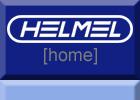 |
|
 |
 |

|
|||||||
 |
|
Article # 2 |
|
Appendix to ANSI/ASME B89.1.12 Standard INTERIM TESTING OF CMM SYSTEMS (This Appendix is not part of the ASME B89.1.12 standard - but is included for information purposes only) |
|
1 INTRODUCTION The goal of CMM interim testing is to identify and rapidly remove from service defective CMMs before significant numbers of good parts are rejected or bad parts accepted. The frequent application of interim testing will increase confidence in CMM performance between CMM calibrations. Interim testing is not a substitute or replacement for CMM calibration, and is not diagnostic in nature. Rather it checks the validity of the calibration by detecting common CMM performance failures. It is strongly recommended that users regularly apply interim testing to their CMMs. An effective interim test checks the entire CMM measurement system including subsystem components which are utilized in the normal operation of the CMM. This may include such components as probes, probe heads, temperature compensation sensors, rotary tables etc. This document assists CMM users by providing information on efficient interim CMM testing. 2 PREVENTION AND POOR PRACTICE Good metrology practices can assist in avoiding CMM failure situations. For air bearing machines, water in the airlines is a significant source of bearing contamination and can produce undesirable conditions such as bearing drag or potential failure. If clean dry air is unavailable, the use of a small air drying and filtering system on the CMM's air line is strongly recommended. Air lines should be kept in good condition and secure; a sudden drop in air pressure while the machine is in motion could damage both the air bearings and ways. Variations in air pressure can also make some CMMs appear to have squareness or other geometry errors. Care should be taken to keep bearing ways free from damage and contamination by avoiding placing hands or parts on the way surfaces. This is particularly true for machines which use an exposed portion of the table as an air bearing way. Regular cleaning of way surfaces will remove debris that can damage the bearing-way interface. Although air bearing systems tend to reject large debris by the outward flow of dispelled air, and by maintaining small (often under 10 micron) air gaps at the bearing-way interface, the gradual accumulation of material, e.g. from coolant mist, on the way surface can result in CMM geometry errors. Similarly , mechanical bearings may require lubrication to ensure smooth uniform motion. Bearings may also become damaged from excessive weight loading on the CMM, particularly from the impact of loading heavy parts. Comments: In this recommendation by the ANSI B89 committee it states on the first line of the introduction that the goal is to "remove from service defective CMMs". This is a strong statement. Please note that air bearings are first in line as the primary cause of failures as per paragraph (2); not the other "subsystem components", but air bearings. |
|